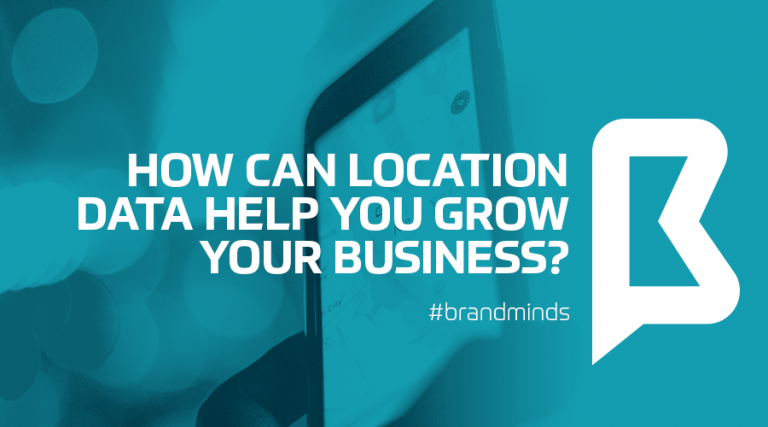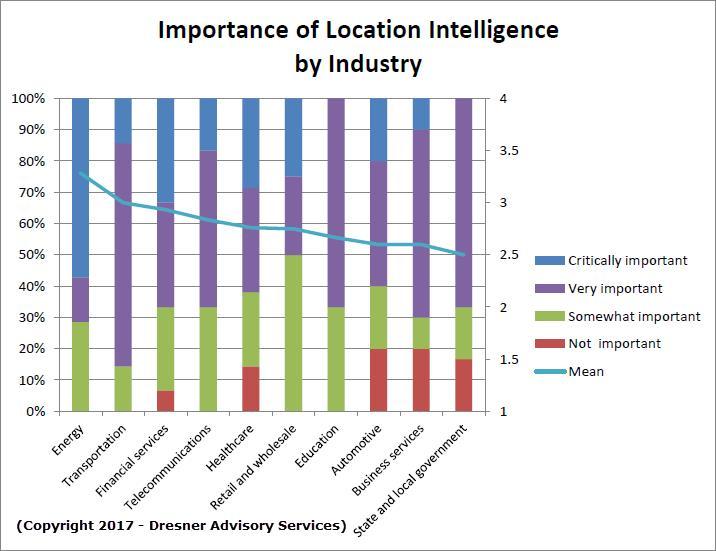How Can Location Data Help You Grow Your Business

The importance of data is growing daily and its impact on the businesses as well. Gathered and used in smart ways it can help you reach the right audience, in the right way. In other words, it’s a known fact that location intelligence has become a fundamental part of some of the most successful businesses in the world today. Tough economic times and the advancement of new technology in recent years have massively pushed the need for businesses to gain more transparent and competitive insights on their performance and opportunities.
According to geovation.uk, location provides meaningful context. It can identify essential relationships between geography and consumer experiences, products and services. Location intelligence answers important questions, such as ‘where are my most valuable customers?’, ‘where are the issues impacting my supply chain?’ Location intelligence can detect clusters and patterns of events, make predictions, and provide the basis on which to make better business decisions.
Knowing the location of users, employees and company assets is becoming a vital part of many businesses in order to act efficiently and make informed decisions. From helping customers locate relevant amenities (e.g. Foursquare, Tripadvisor) to logistics companies optimizing delivery routes (UPS, Hermes), location, spatial data and digital mapping are playing a pivotal role in these business functions.

At the same time, location represents a great manner of revealing relationships between data sets that might not have otherwise been obvious and, through location analytics, arrive at great insights.
Worries about concerns like user privacy and data quality are valid: Know that it’s important to source location-informed insights from opt-in data that is thoroughly cleansed and, most importantly, aggregated and anonymized (the Location Search Association recently published a valuable landscape report analyzing the key providers in the space). Be sure to work with a data provider that adheres to emerging industry best practices, including use of data sourced only from apps with specific user opt-in (like Apple is now mandating), and complies with country-specific regulations, like GDPR. – entrepreneur.com
Data company Carto partnered with market research firm Hanover Research on a February 2018 study called “The State of Location Intelligence 2018,” surveying more than 200 C-level executives about the ways their companies are using location data to identify new consumer markets, improve marketing strategies and improve customer service. Here are some of their main findings:
- 66% of respondents said that Location Intelligence was “Very” or “Extremely” important today for their businesses, 78% said it would be in the next year, and 85% said it would be in the next three years.
- Only 27% said that they use any kind of custom geography and 17% use block groups. To understand location data, businesses must begin visualizing and analyzing at a deeper geographic level.
- Nearly all C-level and management level respondents,especially those from small to mid-sized organizations, note a strong likelihood to invest in Location
Intelligence within the next one (78%) to three years (84%). - Companies are very interested in finding data scientists that understand how to manipulate spatial data effectively, and conducting iterative spatial analysis is the most important step in applying Location Intelligence.
- “Ensuring data quality and accuracy” (49%), “gathering data real time” (40%), and “extracting data from existing systems in a usable way” (39%) are more commonplace challenges in terms of data collection.
Taking a closer look at these data, we can see for sure that if you know how to tap into the Location Intelligence right, your business can have a bright future and even expand, especially because many aren’t already using it at its full potential.
Therefore, how can you do more and be ahead of the rest? Entrepreneur.com is giving you some ideas:
- Use the big potential that research is offering you. “Location data can provide a stronger context of your target audience to better activate consumers. Beyond just marketing what you already have, it can also help reveal opportunities for products or services that you’ve not yet developed or marketed.”
- Competitive Intelligence. “This wealth of insight about where people go in the real world and, in particular, how they interact with your competition, is invaluable intelligence to your business and can help inform decisions about everything from pricing and inventory to in-store promotions and staffing levels.”
- Acquisition and investments. “Asset managers are increasingly turning to location data to inform their investments, according to a recent report from Optimas. Given this trend, location data should most definitely be part of your due diligence when evaluating any prospective investment or acquisition. Evaluate the foot traffic patterns in and around the business you’re considering and think about what it might reveal.”
More on the subject, tap here.
Inspirational study cases one can find in this Forbes article.
What Does It Take To Have Entrepreneurship In Your Blood
Is the entrepreneurial spirit something that you inherit or something you gain? Is it something that anyone can have or grow, or is it just for certain people? Can anyone become a successful entrepreneur or not? Those are a series of question that have been on many people’s mouths and minds during the years. Especially when confronted with the idea of starting a small business of their own.
A number of researchers, including Tim Spector and Lynn Cherkas of the Department of Twin Research and Genetic Epidemiology at Kings College, London, alongside Scott Shane, professor of entrepreneurial studies at Case Western Reserve University, studied the behavioral and molecular genetics of entrepreneurship by looking at a general pool of people, as well as identical and fraternal twins. They tested the number of businesses a person had started, the length of time someone was self-employed, and other factors such as the desire to run a business. According to inc.com, the findings included the following:
- 37 to 48 percent of the tendency to be an entrepreneur is genetic.
- The tendency to identify new business opportunities is in your genes.
- Self-employment income is heritable, which means that genetics affect not only the tendency to engage in entrepreneurship but also the ability to perform it.
- The tendency to have personality traits such as extroversion, openness, etc., has a genetic component. This suggests that your genes could affect your tendency to be an entrepreneur by influencing the type of personality you develop.
Another study, carried out by researchers from the UK universities of Birmingham and Reading on 17,000 children born in 1970, checking in with them again almost four decades later as they turned 38, found that the youngest children of parents who were not themselves self-employed were almost 50 per cent more likely to become entrepreneurs.

But when a family already had a business, things changed dramatically, the research showed. Last-borns were no more likely to be self-employed than their siblings. They were, in fact, 18% less likely to follow their parents into business – instead it was the first and middle children who had the highest propensity, at 151% and 118% respectively. Moreover, younger siblings were more “exploratory, unconventional and tolerant of risk”.
“Let’s face it – some people were born entrepreneurs stopping at nothing to pursue their passion to innovate and build extraordinary businesses.Failure is just another step in the process to success. Whether big fish – small pond or big fish – big pond – BIG is their goal,” said Randall Taussig.
Now, leaving aside all the researches and contemplation on the subject, if you really want to know if you are cut out to be an entrepreneur, I think you should take Gary Vaynerchuk’s advice:
If you want to know whether you’ve got that entrepreneurial spirit in your blood, here is what you do: You cut out watching your favorite sitcoms at night, you cut out playing more GTA5, you cut out going out for beers, you cut out being on the softball team, you pick a dream, and you attack it.
And if you prefer all that downtime over the upside of building your own business? I honestly think that’s great! That’s totally fine, but you’re not allowed to complain about how much you hate your job, just like I am not allowed to complain about my lack of free time or sleep.
How to Self-Motivate and Change Your Life
It is said that it’s harder to keep being successful or on top that to achieve success in the first place. That is a sentence I strongly believe in, as success may come in many shapes and forms, sometimes even by luck and unexpected, while actually holding on to that number one spot represents a hard work done daily.
The same it happens with motivation. According to an article posted on medium.com, in the case of the New Year’s resolutions, for example — while 93% of people set them, only 8% of them actually find the inner-drive to follow through. Motivation is a better predictor of our career success than intelligence, ability or salary . Research shows that there are some proven ways you can become self-motivated, even when you expect less.
According to the American Psychological Association, people who set goals that are both specific and challenging, are 90% more likely to achieve what they’ve set their mind to. When we set goals that are broad and general our motivation is lessened since we don’t have realistic and measurable milestones to check off along the way.
At the same time,still, “being realistic with what you can achieve in a given amount of time is crucial to your success and for the morale and motivation levels of your team. While it is important to aim high, it is equally as important to encourage yourself and your team by hitting goals along the way. Each time we hit one of these goals a burst of dopamine is released — this allows us to train our brain to crave achievement and push towards the next item on our list,” wrote Elle Kaplan, CEO/Founder of @LexionCapital & CIO of LexION Alpha. Self Made Entrepreneur, Financial Expert & Dreamer, for medium.com.
Connecting to your values and really knowing the WHY that drives you and makes YOU who you are is an extremely important step in the process. And, sometimes, if necessary, even change your HOW. “You can instantly find your tasks more enjoyable by shifting from getting them done, to doing them right. I think of it as mastering your craft. Make it artful. Sometimes slower is better. Other times, the key is to make it a game and actually speed it up. You can set time limits and race against the clock. Changing your how can get you out of ruts and find new ways to escape the mundane,” wrote time.com.
Embrace your desire and create the space to make it happen and flourish. You won’t make any changes if you don’t create a small space for the change. As the specialists from zenhabits.net show us, don’t wait for the change to happen — make it happen. Block off some time on your calendar each day, even if it’s just 10 or 15 minutes. If you don’t have the time, think about how long you spend each day on Facebook, TV, games, or doing smaller tasks that aren’t as important. Push those back for just a bit, and do what’s most important to you first.
Once you are in the right place, physically and mentally, make sure you have around you the right people to guide you and support you in your journey. No one needs people that don’t believe in us and our path. The good energy created by you and the right people will help you in your quest. You have a long road ahead of you, but the right mindset is essential.
Last, but not least, as time.com points out “monitor the progress you’re making and celebrate it. Harvard’s Teresa Amabile‘s research found that nothing is more motivating than progress.”
How to increase trust and create well-being in your organization
“Trust is the willingness to be vulnerable to the action of others. Trust is a choice. Trust means that we have confidence in the intentions and motives of the other party. We trust it to advance and to protect our interests, our wellbeing. We understand trust as being the quality of love, commitment, friendship and partnership,” wrote Aldo Civico for Psychology Today.
According to weforum.com, PwC has conducted research, run focus groups and talked to both leading experts as well as the everyday person on the topic of trust, the question being: what makes up trust in a business – and can it be quantified? What they found out was that, indeed, trust could be measured. When considering if a company should be called trustworthy, people are looking for:
· Competence – Does the organization do what it says it will?
People expect companies to be reliable and transparent. A fast-food company should be upfront about the possibility their delivery will be delayed, for example. In cases of major delay, companies should be forthright about not even accepting the customer’s order. Fast food is supposed to be “fast”, after all.
· Experience – Does the organization keep its promises?
Companies are expected to be responsive, to listen to public feedback, to make the necessary improvements and treat customers as individuals. (My experience with Marks & Spencer’s high-quality and consistent customer service comes to mind again.)
· Values – Do you believe in the organization?
People want brands to understand their needs, to hold the right sort of principles and to care about their impact on society. Clothing retailers that source their cotton from fair trade suppliers are increasingly in demand because they are not seen to be exploiting cheap labour and because their products will benefit small-scale agricultural workers.
At the same time, The Ken Blanchard Companies researchers surveyed 1,800 workers looking at the connections between trust, well-being and coaching behaviors.The research found that trust and well-being were both positively impacted by perceptions of managers engaging in three key behaviors.
- Facilitation: Helping employees to analyze and explore ways to solve problems and enhance their performance.
- Guidance: The communication of clear performance expectations and constructive feedback regarding performance outcomes, as well as how to improve.
- Inspiration: Challenging employees to realize and develop their potential.
Moreover, a paper which accompanies the research shared four coaching skills to help managers move away from some typical tendencies—telling people what to do, making assumptions, and solving problems—and instead adopt a coaching mindset. Those skills are: listen to learn, inquire for insight, tell your truth and express confidence.
On its turn, inc.com identifies four critical elements of trust that leaders need to be aware of and that apply to both leaders and team members alike: able, believable, connected and dependable. More on their perspective one can read here.
What is The Happiness Equation?
We are used to talk about working hard, discipline,motivation, passion for what we do and that will make the business grow,but we hardly think and talk about what makes us happy and makes us choose a certain professional path.
The Happiness Equation is a book wrote by Neil Pasricha that may change the way you think about everything—your career, your business, your relationships, and ultimately, yourself.
The book is the result of an unrelenting search, over more than a decade, to hack human happiness. It contains the collective wisdom of hundreds of positive psychologists, dozens of Fortune 500 CEOs, and thousands of personal interviews. From Germany to Japan, from Buddha to Vonnegut, from Hitchcock to Home Alone, Neil Pasricha, the New York Times bestselling author of The Book of Awesome focused on one life-changing questions: what is the simplest formula for a happy life?
According to Melanie Ginsburg’s article on Medium.com, research suggests that only 10% of our happiness is based on life circumstances. The other 90% of our happiness is based on our genetic predisposition and the specific things we do to improve our happiness. That means you can actually train your brain to be happy. Some things that Pasricha suggests is walking three times a week, writing about positive experiences, doing acts of kindness, completely unplugging, meditating, and practicing gratitude.
The Power of Noticing by Max Bazerman – main ideas and learnings
Can you imagine what advantage you would have in negotiations, decision-making, and leadership if you could teach yourself to see and evaluate information that others overlooked? The Power of Noticing provides the blueprint for accomplishing precisely that. Max Bazerman, an expert in the field of applied behavioral psychology, draws on three decades of research and his experience instructing Harvard Business School MBAs and corporate executives to teach you how to notice and act on information that may not be immediately obvious.
Some of the most important ideas and learnings that Max Bazerman presents in his book are:
Human beings have an amazing capacity to ignore clear warning signs of others’ unethical behaviour,therefore is important to always be alert and pay attention to details and the history behind us.
Leaders often fail to notice when they are obsessed by other issues,when they are motivated not to notice and when there are other people in the environment working hard to keep them from noticing. Still, it is the responsibility of leaders to notice when things are going wrong in their organization. If you see an anomalous trend, investigate until you are given a clear answer. It is the job of the leader to identify what information is needed and how to obtain it,rather than acting on the information that is in the room.
Put it on your agenda to notice. Focusing is good, but sometimes you need to take a look around.
Extensive research demonstrates that our desires influence the way we interpret information, even when we are trying to be objective and impartial.
Take an outsider’s view.
Audit your organization.
Identify changes that will help to create a noticing organization.
When something is wrong, figure out what it is.
Acting to prevent predictable surprises:
- recognize the threat
- prioritize the threat
- mobilize action
What is “over datafication” in marketing?
Datafication refers to the collective tools, technologies, and processes used to transform an organization into a data-driven enterprise. After converting processes to data, they can be tracked, monitored, and optimized. Even if data isn’t used, businesses can still acquire large amounts of data, store it, and then decide later on how they will utilize it.
According to Key LimeInteractive, new technologies have enabled lots of new ways to “datify” our normal activities:
-
- GPS devices on smartphones, such as Google maps, are able to track where we are at certain times of the day
- Going for a jog/walk – one can monitor distance, speed, pulse, heart rate, number of steps
- Sleep schedule – quality of sleep, duration, number of sleep interruptions during the night
- Shopping – how much food to purchase, finding lowest prices, monitoring quantities consumed in a household
- New smart technologies are making it easier to truly get to know our customers and allow us to make better marketing decisions.
We also believe that we need to pay attention to the fact that is a great difference between datafication and digitalization. The Impact of Datafication on Strategic Landscapes – a report published in April, 2014 by Ericsson in collaboration with the Imperial College Business School and the UK’s Sustainable Society Network explains the differences and interrelationship between datafication and digitalization. As Irving Wladawsky-Berger points out on his blog here , there are four important areas where data science is already having an impact: datafying personal behaviors, datafying business processes, datafying cities and datafying private lives.
But what happens when it comes to over datafication? According to the info offered by MarchTech forum, more and more companies are entering the Big Data into their global and corporate strategy, the big data companies registering an annual growth of up to 12 % by 2020,while in 2016 the volume of the market being over 150 million dollars.
With this growth come also the problems, as the Spanish Zenith Media’s blog points out. The over datafication brings with itself a data dependency of many analysis business sectors. Still according to Zenith, an excessive subordination to Big Data can cause the slowing down of the company’s natural processes, determining the marketing representatives to only look at the data and being unable to date a decision if they are not supported by it. This could only lead to a tendency of sacrificing the creativity and the originality.
Moreover, the data dependency would generate a lower risk-taking rate trend, that, on a long term, could put in peril some of the most important marketing functions and its interactivity with the users.
In other words, the over datafication would represent exactly what creative people were afraid of when it came to research companies and using research in their day-to-day creative processes: less innovative campaigns, but easily measured; data used wrong; the change of the strategy over-night in case of lack of results or poor ones,etc.
But in the end, it all comes down to measure and attention. Finding the balance is the key to success. “The speed of change means that marketers need to have confidence in the strategy not to panic if the data shows they have had a bad week, as the next week could be great,” writes Marketing Week.
Gmail versus Outlook: which e-mail provider is better for you? Part I
According to a Radicati Group study from January 2017, there will be more than 3.7 billion email users worldwide by the end of the year. That means that nearly 54% of the entire planet is currently using email. Putting things in perspective, the same group reported about 1.9 billion worldwide users in May of 2009 and projects that that number will reach 4.1 billion by 2021.
According to wikipedia, Gmail dates from 2004, but Official Gmail Blog tracks the public history of Gmail from July 2007. In February 2016, Gmail reporter 1 billion monthly active users, up from 900 million the company announced during its I/O developer conference in May 2015 and up from 425 million in 2012, says TechCrunch. Outlook was re-launched by Microsoft in 2012 Microsoft migrated all Hotmail users to Outlook.com. The fledgling service has a ton of unique features including Clutter, email rules, and integration with Outlook calendar. In early 2017, Outlook.com had a reported 400 million users. However, that number hasn’t changed as drastically as Gmail’s statistics. In July 2011, Microsoft was said to reach 360 million active users for its Windows Live Hotmail service worldwide.
The Radicati Group counts the 3.7 billion email users in January 2017 as both consumer and corporate users. However, because it isn’t clear how the email accounts are differentiated between consumer and business users, it’s hard to measure the accuracy of the statistic.
Therefore, we decided to take a look at the most important two email providers: Gmail and Outlook, and give you the possibility to have a clearer picture on which one you would prefer better. Both Gmail and Outlook offer both free and premium versions. The premium email versions have, naturally, more features.
| Google’s Gmail | Microsoft Outlook.com | |
| Storage | 15 GB. The storage limit is shared between Google Drive, Gmail, and Google Photos. If you’ve reached your limit you can buy extra storage. Your Google Account also has storage in the cloud-based Google Drive. | While the actual limit is unclear, it appears that you start with 5 GB of storage and this amount increases over time. Your Microsoft Account also has storage in the cloud-based OneDrive. |
| Search Capabilities
|
Search any combination of the following elements using the advanced search:
|
Outlook.com has a simpler search. The search mail or people option allows you to search any combination of:
Or you can search your contact list. There is a separate search for Skype as well.
|
| Security | Includes 2-Step Verification and spam detection. You can enable a verification icon for emails from verified senders through Google Labs. | Includes 2-Step Verification. Uses trusted sender icons for emails from trusted senders. Suspected spam messages appear with colored red or yellow safety bars at the top of the message. |
| Inbox Organization
|
Default Gmail organization is based on labels and up to five tabs. Assign colors to labels and use stars and other symbols to flag important messages. Also, you can convert your inbox to a classic inbox or a priority inbox. | Default Outlook organization is based on categories, folders and subfolders. Flag important messages or pin them to the top of the folder. |
| Instant Messaging | Gmail uses the Chat function for instant messaging. You can find the Chat icon towards the bottom of the Gmail inbox on the left. | Outlook uses Skype for instant messaging. You can find the Skype icon in the upper right corner of your inbox. |
| Contact Management | Import contacts from a variety of other email providers including:
Import a CSV or vCard file. Import contacts from your Google+ social media account. |
Import contacts from other sources, including:
|
| Advertisements | Ads appear as emails at the top of your inbox tab. The word “Ad” appears in a yellow box to the left of the subject line. | Outlook.com uses display ads that appear to the right of your inbox. They take up quite a bit of space on the screen. |
| Extras | Incorporates tasks, customizable themes, Google Lab. | Incorporates calendar, tasks, customizable themes. |
source: Business Tuts Plus
Head to head
Calendar
As process.st points put, neither platform has a real solution that lets you view your calendar and email side-by-side. While both Gmail and Outlook sync events with your calendar, neither let you view your calendar and inbox at the same time, in one tab. When you click on the Outlook tool bar, you’re taken to a separate calendar window. On the other hand, when you click on Calendar in Gmail, it keeps your inbox open, and adds a new window (or tab) with your calendar.
Neither Gmail nor Outlook lend well to multi-window viewing. At least Gmail lets you view your calendar and email at the same time.
User Experience (UX)
Text in Gmail is larger than in Outlook. Coupled with the clear definition between bold and non-bold text, as well as the inbox shading available with most templates, Gmail is generally softer on your eyes. So if you are spending a lot of time in front of the computer, you might prefer Gmail on this one. Moreover, the provider is very useful when it comes to unread emails. “Read” emails appear in a darker shade than “unread” ones. “Unread” emails are also distinguished, because their sender and subject are in bold.
Outlook differentiates these by putting the sender and subject in blue. It’s bold too, but since the text overall in Outlook is flatter and smaller, you still need to squint to see if something is a new email. More opinions you can find here.
Filters & Organisation
Besides the already known features, lifehacker.com, points out that Gmail uses labels and stars instead of folders (although it has faux-folders, too.) You can apply multiple labels to your messages, which gives you greater flexibility in setting up exactly the kind of organization scheme you like, and stars let you set aside the most important emails for later. You can even enable Smart Labels that Google can apply labels like Finance and Travel automatically.
Gmail also uses a priority inbox system to automatically find messages it believes are important to you. Emails are deemed “important” based on who you email, which messages you open, what you interact with and other criteria. You can also manually mark an email as important to help it learn.

End of part I.
Marketing research done right
Either you start a new business, launch a new project / product / service or you just want to stay ahead of your competition, a strong and smart marketing research will give you the necessary advantage over the competition. Moreover, in this ever-changing and moving market, with the technology changing it day by day and with consumers always up-to- date and in control of the situation, research becomes more and more important daily. Therefore, market research is a key component of any good product team management process, sales and marketing strategy, or business growth strategy.
“Marketing research can give a business a picture of what kinds of new products and services may bring a profit. For products and services already available, marketing research can tell companies whether they are meeting their customers’ needs and expectations. By researching the answers to specific questions, small-business owners can learn whether they need to change their package design or tweak their delivery methods–and even whether they should consider offering additional services,” writes entrepreneur.com.
Research deserves its important place in a business activity and should be treated accordingly. We are presenting you some of the steps you must take in order to make sure your research is done right.

source: AdWeek
- Primary research focuses on gathering data from analyzing current sales and the effectiveness of current practices. It also takes competitors’ plans into account, giving you information about your competition. The pieces of information will be received following: interviews (qualitative and quantitative), surveys, questionnaires (online or by mail), focus groups.
2. Secondary research. Analyzing the data that has already been published. and that can help you identify competitors, establish benchmarks and identify target segments. Your segments are the people who fall into your targeted demographic–people who live a certain lifestyle, exhibit particular behavioral patterns or fall into a predetermined age group.
3. Study the Economy: Just like the history is important in knowing and understanding who we are as a culture and what we will be in the future, showing what we can expect, so is knowing and understanding the economy helping your business grow. You can better understand reports about some of the most important big factors affecting the industry you’re in and the customers you hope will spend their money on your products or services.
Being up-to-date with the economics world will help you know how to adjust your business, prevent difficult situations and choose the right time to expand.
4. Read Business and Industry Publications: Whatever your industry, there’s likely a trade group or research firm out there compiling industry statistics and trends that are all insights into your business. Join your industry trade group or follow key industry thought their leaders on social media and media (their TV, print, online appearances). Being part of the industry and its insights will help you find out detailed industry statistics and trends that can help you better understand the past, present and future of companies like yours.
5. Look Elsewhere: Take example from successful local and international businesses. A similar business on the opposite end of the country may give you some great promotional ideas, or an international market could start complaining about rising commodity prices before they affect you directly.
6. Hire a smart internal researcher and a good research agency. Your researcher will be able to present you monthly reports regarding the market and your consumers, while the agency will be a key element when making an important move on the market. They will for sure make the difference.
More ideas and steps you can find here.
Best Cities For Young Entrepreneurs
Being an entrepreneur is never easy, either you are young and have the freshness and power to work on your side, along with initiative and courage, or a little more mature and you already know very well the market you are trying to penetrate and succeed on. Entrepreneurship brings a set of challenges for every type of business, therefore choosing the city to operate from might be one of the most important decisions one might take. NerdWallet, quoted by Inc.com, has a few suggestions. The personal finance site recently crunched through numbers from the Small Business Administration, the Census Bureau, and the Bureau of Labor Statistics among other sources to uncover the best cities with thriving communities of educated, young entrepreneurs. Bonus points were awarded to places that were actually affordable.

- Austin, Texas
- San Francisco-Oakland, California
- Salt Lake City, Utah
- Denver, Colorado
- Minneapolis-St.Paul, Minnesota
- Seattle, Washington
- Madison, Wisconsin
- Midland, Texas
- Boston, Massachusetts
- Fargo, North Dakota
More explanation and results can be easily found here.
Entrepreneurship is also the rare area of business where youth can be an advantage. Whereas established companies typically look for experience when they hire, a start-up business can benefit from the fresh perspectives and raw energy of younger adults. Younger people like Millennials also have less to lose in terms of an established career and salary, and so they can be more willing to put what they have at risk to create a new business. As people grow older, they tend to lose this appetite for risk.
The data is also supported by a new research from MoneyRates.com that revealed also Texas and Florida offer the best economic climates for young entrepreneurs. Seven of this year’s 10 best cities for young entrepreneurs are located in the Lone Star or Sunshine state, proving that smaller cities have a lot to offer young entrepreneurs who launch their startups outside of major hubs like San Francisco, New York and Chicago. The explication being the fact that “big cities are more likely to take entrepreneurship for granted while smaller cities typically offer incentives that make life as an entrepreneur easier and more attractive”, as Zac Carman writes for entrepreneur.com. Based on the criteria examined, MoneyRates.com named these 10 cities the best for young entrepreneurs in 2016:
- Austin/Round Rock, Texas
According to the U.S. Census Bureau, Austin/Round Rock is the third-fastest-growing metropolitan area in the nation. Additionally, it is one of the more well-educated areas of the country, with more than one-third of its population having a bachelor degree.
- Raleigh, North Carolina
The city is one of the 10 fastest-growing in the U.S., and boasts the highest number for the proportion of the population with at least a bachelor’s degree.
- Midland, Texas
The city is the second fastest growing in the U.S. and ranks second in young adult affluence.

- Houston/The Woodlands/Sugar Land, Texas
Houston has a high level of young adult affluence, and benefits from Texas’ business-friendly tax policies.
- Crestview/Fort Walton Beach/Destin, Florida (tie)
Because this area, which has one of the highest levels of young adult affluence, is located near a junction with three major highways, it provides great opportunities for business activity. Additionally, Florida has one of the nation’s lowest business tax rates.
- Odessa, Texas (tie)
Odessa ranked fourth nationally in both overall growth rate and young adult affluence.
- Sioux Falls, South Dakota
South Dakota has the second-lightest business tax burden in the country, and Sioux Falls ranks in the top 10 nationally for young adult affluence.
- The Villages, Florida
Even though this is a retirement community, The Villages has the fastest growth rate of any city in the nation. This presents a lot of opportunity for businesses that cater to senior citizens.

- Denver/Aurora/Lakewood, Colorado
The Denver area ranks in the top 10 for educational attainment and young adult affluence. Additionally, it has a healthy growth rate.
- Orlando/Kissimmee/Sanford, Florida
Orlando ranks in the top 10 because of its rapid population growth and favorable business tax climate.
But what about Europe? Nesta launched in 2015 the European Digital City Index (EDCi), a ranking intended to measure how well different cities across Europe support startups and scale-ups in digital industries. Last year, as part of Global Entrepreneurship Week, they launched the 2016 version of the EDCi, which again describes the ‘fertility’ or attractiveness of different European cities for digital entrepreneurs.

The city that leads in London, but rankings are very close, especially towards the top, with a fraction of a percentage point separating London from close contender Stockholm. Stockholm performs extremely well for its size, with superb digital infrastructure and a highly digitally skilled population; companies like Skype, Spotify, Klarna, King and Mojang are the result. The highest new entrant is Bristol, which joins the list in 13th place, and scores particularly well due to its receptive entrepreneurial culture and local business environment, while Bucharest ranks only 52 in this top 60.
